
How to do Hanging Leg Raises
Key Takeaways
- Hanging leg raises are an intermediate exercise focusing on the lower abdominal region.
- Perform the hanging leg raise to build abs in the gym or at home, once you learn the proper form.
- Find out below how to perform hanging leg raises including modifications you can make, common mistakes, and alternatives to try.
The hanging leg raise has been around since before the Golden Era of bodybuilding, and for good reason. This exercise focuses on the lower abs to build the chiseled, washboard stomach you’ve been longing for.
If you aren’t doing hanging leg raises yet, you may want to after reading this article. Today, you’ll find out what muscles are worked during hanging leg raises.

Then, we’ll get into:
- Proper form with step-by-step instructions
- Modifications and variations
- The most common mistakes and how to avoid them
- Alternatives to the hanging leg raise
Hanging Leg Raises: Muscles Worked
Don’t be fooled by the hanging leg raise, this exercise is not about working the leg muscles. While sit-ups and crunches focus on the upper abdominals, hanging leg raises work the lower abdominals. You’ll also work the hip extensors when performing hanging leg raises, namely the sartorius and iliopsoas muscles.
In fact, one study suggests that the hanging leg raise provides the most challenge to the external obliques and rectus abdominis. The hanging leg raise was compared to the walkout from push-up and body saw. Researchers also found there was slightly more spine compression in the hanging leg raise than the body saw.
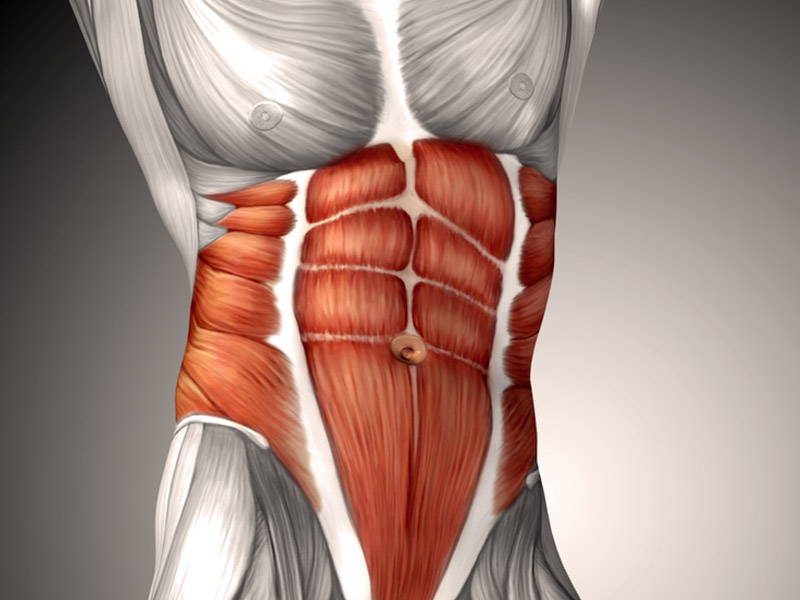
It’s not all about the abs and hips, though. Hanging leg raises also work the quads, lats, and arms. Your grip and shoulder strength may also improve when including hanging leg raises as part of your ab routine.
Here are a few more benefits to hanging leg raises:
- Can be a catalyst for simplifying your core routine
- Ability to complete almost anywhere, as long as there is a sturdy bar to hang from
- Excellent move to emphasize the lower abdominals to create six-pack abs
- High degree of difficulty = maximum reward
Are you ready to get started on hanging leg raises?
Let’s go!
How to do Hanging Leg Raises: Proper Form
Hanging leg raises are usually not performed by beginners. It’s considered an advanced movement because of the stabilization needed to complete with perfect form.
If you aren’t ready to perform hanging leg raises, check out the section below with alternative exercises.
Proper Equipment
To complete the hanging leg raise, you’ll need a sturdy bar to hang from. This could be a pull-up bar, rack or other piece of equipment at the gym. Hanging leg raises can also be done at home or at a local park if you have the right equipment.
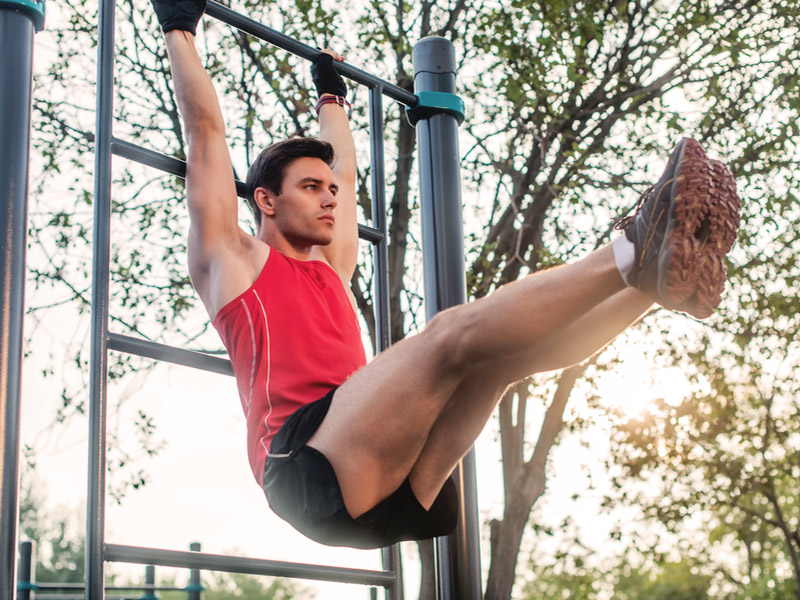
Some things to keep in mind when determining if you have the right equipment:
- The bar must be able to support your full weight without risk of crashing down. A doorframe or ledge may not be the best to support you and could be dangerous.
- A round bar will probably be more comfortable for your hands than a squared bar.
- Some exercise frames have ab straps attached for performing exercises like hanging leg raises. The straps are optional, but they will help support your upper arms during the exercise.
Once you’ve selected your equipment, do some practice hangs from it to be sure it will hold your weight. Lack of proper equipment could cause serious injury.
Proper Form
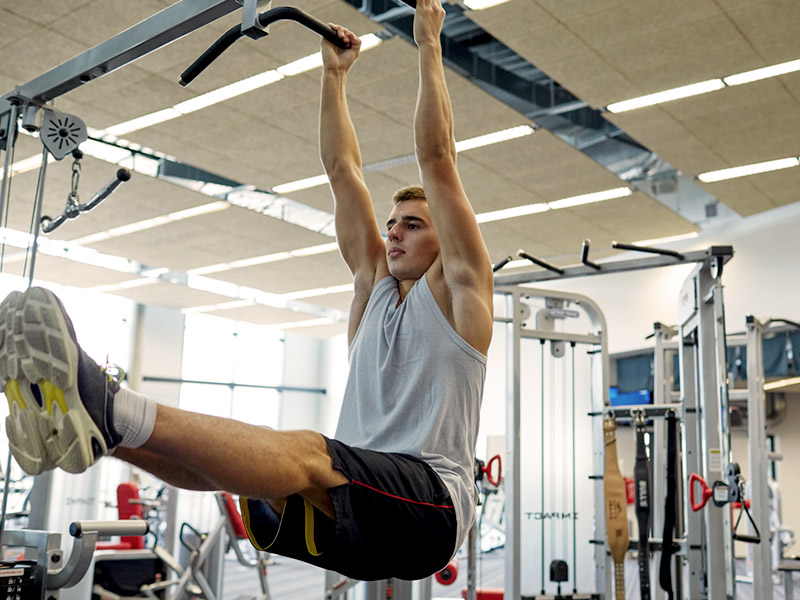
Here are the step-by-step instructions for hanging leg raises:
- Grasp the bar in an overhand (pronated) grip with your hands shoulder-width apart.
- Tilt your pelvis back slightly (posterior tilt) as you engage your abs and hips to prepare for the lift.
- Keeping your legs straight, lift them both, using your hips and ab muscles to do the lifting. Exhale as you lift your legs up.
- Continue in a controlled motion to lift your legs until they are at a 90-degree angle.
- Slowly begin to lower your legs back down, inhaling as you go.
- Once you’ve reached the starting position, you’ve completed one rep. Continue for the desired reps or until perfect form is broken.
Easy, right? Yes, this deceptively easy-looking exercise is a tough one. You may need to work up to your desired reps and sets if you’ve never done hanging leg raises before.
Complete 8 to 10 reps for three sets with perfect form. Take up to 90 seconds to rest between sets if needed.
Need modifications? Think hanging leg raises were too easy or hard? Check out the modifications and variations below.
Modifications and Variations
If keeping your legs straight makes this move too difficult, you can modify it until you can. The hanging knee raise or bent-knee hanging leg raise is a good choice for a modifier.
Rather than have your legs out straight, you’ll bend your knees and lift them to your waist. Maintain proper form, as if you’re doing the full hanging leg raise.
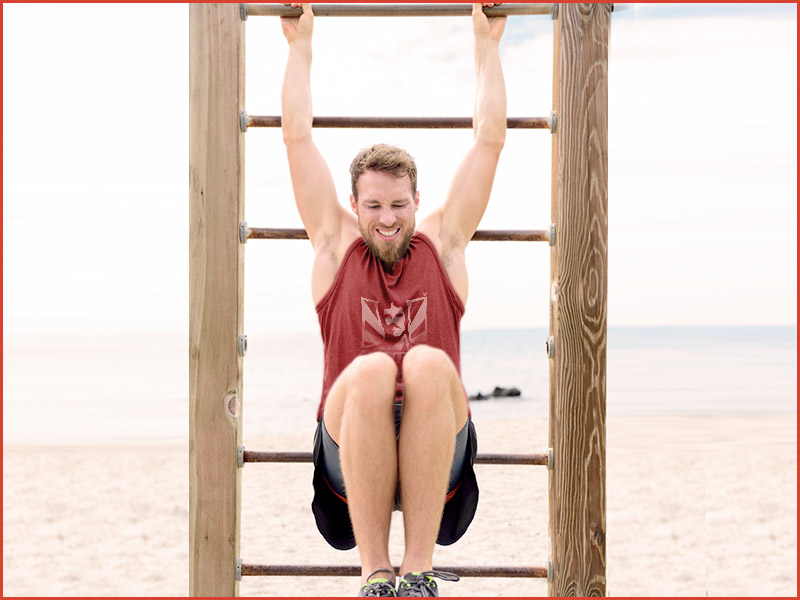
Once you’re ready, you can increase the difficulty by straightening your legs at the top of the raise. Lower them back down with your legs straight, just like in the hanging knee raise.
If it’s available, you can also use a captain’s chair to complete the vertical leg raise. The same form applies, but your back and arms are resting against pads instead of hanging from a bar.
To increase the challenge, here are a few ideas to make hanging leg raises more difficult and improve progression:
- Add ankle weights or hold a dumbbell between your feet
- Raise your legs even higher, as high as you can go (hanging v-sit)
- Do a one-arm hanging leg raise (straight leg or bent knee)
- Extend and bend your knee while your legs are raised, prior to lowering
Now, let’s look at some of the most common mistakes made when doing hanging leg raises and how to avoid them.
Hanging Leg Raises: Common Mistakes to Avoid
Mistakes can happen with any exercise, but if you don’t correct them, it could eliminate the benefits. Avoid some of the most common mistakes during the hanging leg raise to get the most out of this exercise.
1. Swinging Your Body
Swinging or swaying your body to build momentum is something you want to avoid. Not only can this cause undue stress to your back, you’re not letting your abs and hips do the work.
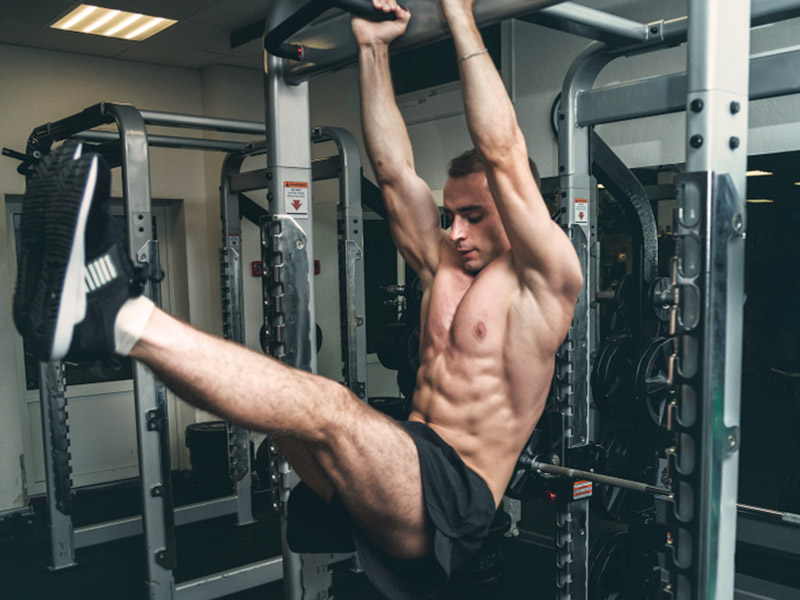
If you can’t perform hanging leg raises from a hang and without building momentum, you’re not ready yet. Practice some modifications listed above or alternatives below to build up your core strength.
2. Not Strong Enough
The first thing you should do before performing hanging leg raises is make sure you can hang from the bar. Grab the bar in an overhand grip, shoulder-width apart, and hang for as long as you can.
Hanging alone is tough when all your weight is focused on your lats and shoulders. If you can’t do this for at least 30 seconds, practice hanging without the leg raises until you can.
Creating this foundation will also help prevent the swinging mentioned in the first mistake.
3. Lacking Control
Hanging leg raises are all about controlling the movement and using stabilizer muscles to complete the exercise.

While your abs are the star of this exercise, your upper body should stay controlled to stabilize the rest of your body. This can be done by pulling down on the bar as you lift your legs into the air. The slow and controlled descent is challenging but also adds to the stability, requiring the muscles to work harder.
4. Not Maintaining Posterior Pelvic Tilt at All Times
Another common mistake seen when performing hanging leg raises is removing the ab tension at any point. The pelvis is directly attached to the lower abdominals, so you want to get the most benefit during the full range of motion.

Once you’ve got the posterior pelvic tilt, keep the pelvis in this position throughout the reps to finish the set. Be sure to get back into proper position before you start your next set to reap all the core benefits.
5. Not Engaging the Upper Body
We mentioned before to prevent swinging you should pull down on the bar. By activating your lats and pulling down and back on your shoulder blades, you’ll stabilize and avoid swinging.
Another tip to ensure your abs stay fully activated when doing hanging leg raises is to lock your elbows. Some may compensate as they raise their legs by bending their elbows, even without realizing it. By keeping your elbows locked at all times, you’ll be sure your abs are working the full range of motion.
If you’re a beginner or don’t have enough strength for hanging leg raises, check out these alternatives.
Hanging Leg Raises Alternative Exercises
If you aren’t ready or can’t perform hanging leg raises, there are alternatives that target the lower abs. These exercises may not recruit as many other muscle groups, but they will work for the core muscles.
Practice these with 8 to 12 reps per exercise with two or three sets. After a few weeks, you may be ready to tackle hanging leg raises.
Heel Tap Crunch
This exercise will work the obliques, lower abs, and hip flexors.
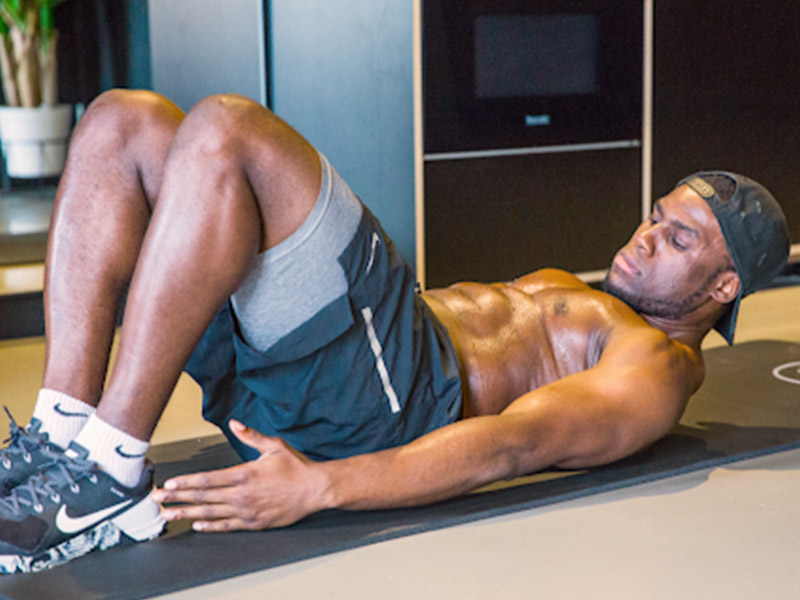
There is no equipment involved, so you can do heel tap crunches at home or at the gym.
- Lie on your back with your knees bent and your heels close to your glutes.
- Engage your core and lift your shoulders off the ground.
- Begin by touching your right fingers to your right heel. Then switch to your left fingers, tapping your left heel. This is one full rep.
Mountain Climbers
This is another bodyweight exercise you can do to work your core, arms, and chest. Check out this article for proper form.

To get even more ab muscle strengthening power out of this exercise, do each step slow and controlled. Imagine you have a glass of water (or place a book) on your lower back. Use slow and controlled movements to avoid spilling the water or dropping the book onto the ground.
Reverse Crunch
Here’s another bodyweight exercise that will target the lower abs. Reverse crunches add less stress to the spine and are a better alternative for some to the traditional crunch.

This move is considered an intermediate move, so you may have to work up to reverse crunches. Here are step-by-step instructions from ACE Fitness on how to perform the reverse crunch.
Can’t get enough of working your abs to get that six-pack? Here are some more ab-centered exercises to keep you busy in the gym or at home:
- 8 Best Ab Workouts & Exercises for Men & Women
- Rachel McLish’s Home Workout
- Your Step-by-Step Guide to Shredded Abs
- Angelica Kathleen’s Core Beach Workout
Wrapping Up
If you want six-pack abs, work both the upper and lower abdominals and the obliques. Hanging leg raises are an advanced exercise that focuses on the lower abs to help you get the physique you want.
Before you try hanging leg raises, make sure you can hang from the bar holding your full weight first. If you can’t, there are alternatives you can do to build up to completing hanging leg raises.

There’s nothing worse than the feeling of exhaustion kicking in too soon after you start your workout. Get the most out of each gym session and speed up recovery with natural testosterone-booster Vintage Boost™.
Are you a fan of hanging leg raises? What are your favorite lower ab exercises to include when working your core? We’d love to hear what works for you in the comments below.








